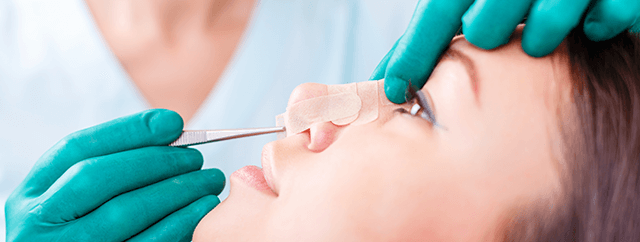Post Date: 5/5/2023

Rhinoplasty, or nose aesthetics, is one of the surgical procedures considered in designing the ideal nose for the face.
An ideal nose should harmonize with the other features of your face. Here it is important to remember that rhinoplasty is a discipline that intersects with art and does not reduce the definition of the ideal to simple measurements.
While specialists perform many treatments and acquire skills over the years, they study the universally accepted beautiful faces at this time and design some proportions of what an ideal nose should look like for each candidate.
While the importance of structure and symmetry, which is called upturned nose in women, comes to the fore, you should not forget that there cannot be a perfect and single nose shape, and the proportions vary due to the different faces of each person.
Having performed successful surgeries in the field of rhinoplasty for many years, Prof. Dr. Selçuk İnanlı is waiting for you at his clinic to reveal the best possible facial appearance. Make a consultation appointment now and let us plan your treatment together.
Since the nose is located in the very center of the face, it is one of the most important elements that has played a decisive role in people's perception of beauty since old times. Studies give clues about how to have ideal and pleasant-looking nose.
Before moving on to these factors, it is useful to know that rhinoplasty is not intended to completely change your appearance but to improve your natural face in terms of functionality and aesthetics.
Some of the globally accepted features of an ideal nose are listed below.
In addition, as time passes, it is inevitable to experience changes in aesthetic and beauty perceptions. In different geographies of the world, in various ethnicities and cultures, the equivalent of the ideal nose may also vary.
There are points you can refer to when defining an ideal nose structure for your face. In this way, you can better understand your own nose and determine your expectations accordingly in the preliminary examination with your specialist. Below are the main features of an aesthetically pleasing nose.
Your nostrils allow you to breathe in quality but also affect your external appearance. It is possible to get smaller and symmetrical nostrils with a nose job.
When "ideal" expression is used, the width of the nose undoubtedly comes first. If you are not satisfied with the current situation of it, your specialist may reveal a narrower structure.
If you have a dorsal hump on your nose, you may be worried about it. Many rhinoplasty candidates also want to eliminate this first so that a flatter appearance is gotten.
Another essential factor in rhinoplasty is the tip of the nose. A sharper one can result in a more pleasant result.
The distance between the upper part of your lip and the tip of your nose is another important factor. This feature is also decisive for the nose to take on a masculine or feminine structure.
As a result of all these qualities, it is understood that there cannot be a single beautiful nose for everyone. Your specialist will show you the possible outcome in the 3D simulation, allowing you to evaluate.
In rhinoplasty surgery, angles are the parameters that experts use when creating an ideal nose. The aim of there is to produce a natural looking result that is compatible with your face. Below you can find the main ones involved in this operation.
It shows the harmony of your nasal bone with your glabella and eyebrow. The columella should be about 4 mm. An ideal nose should have an indentation here.
The nasal angle refers to how your nose tip aligns with the rest of your nose. If you want a change in this area, your specialist considers this aspect.
This allows the expert to determine how much cartilage and bone need to be removed in order to eliminate the dorsal hump. It is measured from the upper part of the nose to the lips. Ideally, it should be sharper than the nasofrontal angle.
Following the determination of the nasal angle, it is essential to evaluate your chin in order to obtain an ideal result. The angle here is called "Mentocervical". It should be between 80-95 degrees.
While designing the nose before rhinoplasty surgery, a specialist takes into consideration many factors such as the position of your chin, temples, nose height, skin thickness in the region, and your gender, as well as your expectations. Proportions and angles differ in men and women.
Another desired result after rhinoplasty is that when you complete the recovery period and go back to your social life, anyone can not notice that you have had rhinoplasty unless you specify. The expert wants to create an ideal nose that matches your face, some other body features, and even your character.
If you want to have an ideal nose that is unique to you and improved in terms of functionality and aesthetics, you can prefer Prof. Dr. Selçuk İnanli. Please reach us through our contact information, do not delay your dreams.